JANE Austen made a symbolic return to her beloved Chawton on Friday with the unveiling in the churchyard of an elegant bronze statue.
Standing on a plinth of Portsmouth stone, the diminutive maquette is looking out over the meadows toward her former home - now Jane Austen’s House Museum.
Crafted by Ellisfield sculptor Adam Roud, the placing of the statue in St Nicholas churchyard, but a stone’s throw from the graves of her mother and sister Cassandra, was the vision and parting gift of villager Michael Sanders, the retiring chairman of the Friends of Chawton Church.
Having raised £55,000 over the years to replace the church bells, to repair the tower, the organ surround and the lychgate, with £15,000 over Mr Sanders and his team resolved to raise the additional £10,000 needed to buy the maquette - the template for the life-size statue commissioned last year by the Jane Austen 200 committee to stand in the market place in Basingstoke, to mark the 200th anniversary of the author’s untimely death in July 1817, aged just 41.
Mr Sanders had found it hard to accept that the original bronze figure was to be located in Basingstoke, where in her youth the author may have shopped and danced, and not in Chawton where she wrote the novels that have resulted in her reputation as the most famous female author of all time.
Mr Sanders said: “Basingstoke has the statue and Winchester has the grave and features on the Austen £10 note, but Chawton has been left out - and it was here she did all the work on her books.”
Keen to redress the balance, the Friends of Chawton Church set about securing the maquette and, on Friday, Richard Knight - a descendent of Jane’s brother Edward, who inherited the Chawton Manor estate through marriage in 1794 and was able to offer his mother and two sisters a cottage in the village - welcomed guests and patrons to the unveiling of the statue.
Born just up the drive, at Chawton House, Mr Knight and his family are still freehold owners of the Chawton manor. Although Mr Knight has not lived there for 30 years, he is a trustee of the house and passionate about helping to ensure that it continues to thrive and retain its place in history.
Of the bronze, Mr Knight told his audience: “On this joyous day, Jane Austen is returning home to be near to her mother and sister in Chawton where she wrote her most prolific work.
“Jane’s mystique continues to just give and give - and I hope this statute will become a mecca for people from all over the world.”
The actual unveiling was carried out by the Lord Lieutenant of Hampshire, Nigel Atkins, who took the opportunity to thank Mr Sanders and the Friends of Chawton Church for bringing the project to fruition.
“I am delighted to unveil this wonderful statute of Jane Austen in this very special village where she lived. I hope it will attract more visitors to the church, to Chawton House, and to the village as a whole,” said Mr Atkins.
The blessing was given by the Bishop of Basingstoke, the Right Reverend David Williams, who referred to the statue as “a quite extraordinary example of beauty, creativity and imagination”.
Jane Austen, with her quick wit and literary talent, had, he said, “given so much pleasure to so many over the years” and he was sure that “she will continue to do so for years to come”.
As the bells broke out in celebration, folk made their way up to Chawton House for a reception hosted by chairman of trustees Louise Ansdell, who spoke of plans for shaping the future of the ‘Great House’, and patron and author Joanna Trollope, who spoke of Austen’s “unstoppable” worldwide appeal.
Her work was not just about ladies in lace but “money, culture, power and class” - like so many exceptional women, she was “inspirational” and “ahead of her time”, she said.
The statue in Basingstoke was a first public commission for sculptor Adam Roud, who describes himself as “a local lad” who “always liked to draw as a kid” and went to Brighton Hill Comprehensive and Basingstoke College of Technology where his art tutor impressed on him a mantra he abides by, that “draughtsmanship and observation from life is paramount”.
He went on to study fine art at Liverpool before working with his father, Ronald, at the Morris Singer Foundry in Lasham, where he learned the process of bronze casting and, in 2000, his talent was spotted and he was able to set up a studio on Lord Portsmouth’s estate at Farley Wallop.
Describing the Austen commission as “my first big deal” because there are no pictures of Jane, the maquette, he said, was “an artist’s impression”.
“It’s more a three-dimensional drawing than a sculpture, to convey a woman walking with grace and poise,” he said.
He had, he said, totally underestimated Austen’s appeal and had been humbled as it dawned on him that this was someone who had written some of the most important books in history.
“It was Jane Austen and it was and is massive!” he declared.
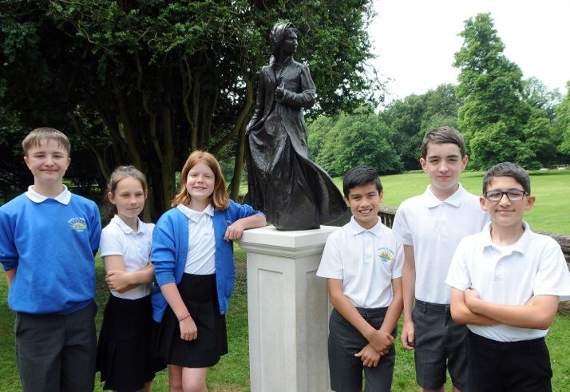
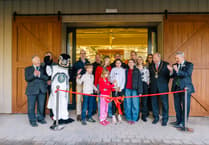
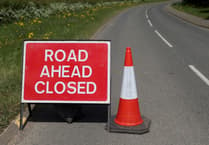
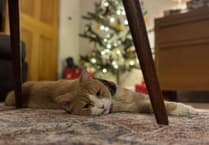
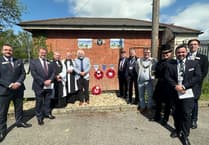
Comments
This article has no comments yet. Be the first to leave a comment.